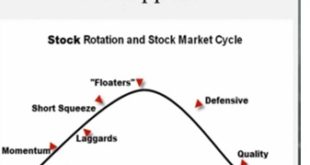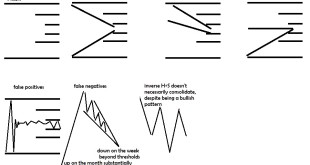If you are trading stocks you are losing money and you don’t even know it. How? Mistakes. How much? I can only tell you how much money the average person is leaving on the table.
It is estimated that mistakes cost traders on average more than 4 times what they risk (in a single trade) PER mistake. (1)
What does that mean? Besides leaving lots of money on the table let’s translate it into facts?
If you are to place 20 trades a month or 240 trades a year and risk 1% per trade, and your profit on average is HALF of what you risk per trade…
then 1% per trade yields an increase of your account size by half a percent per trade.
Without mistakes and $15 per completed trade (buy plus sell costs) and 100k starting amount your gain is about 224.09% per year!.
BUT, what if every 20 trades (a trade a month) you made a mistake? Rather than gain one half of what you risked, you lose 3.5 times what you risked for a net cost of 4 times what you risked.
A 3.5% reduction in your account every 20 trades translates into a gain of “only” 98.19% per year!
In this instance, the gain cost you $125,900.30 with a $100,000 account! You would gain 63.52% more in a year without mistakes.
What if you make 2 mistakes a month or once every 10 trades? Now your 224.09% gain in a mistake free system in a year is down to a mere 20.93%. In this case, your mistakes cost you $203157.50 and you would have made a 167.99% increase in your final amount if you were mistake free and a 63.885% increase if you just cut your mistakes in half.
Nobody is perfect. I am not suggesting you can eliminate mistakes completely, but you sure can reduce them significantly.
If you are trading an account of 10,000, 2 mistakes a month makes the system lose about 15% a year due to compounding costs of commissions compared to gaining over 50% a year if you can reduce them to one average mistake a month.
Awhile ago, I was like you having just come across this realization. At some point, I decided I was going to make it my goal to reduce everything down to a science without compromising the strength of the system.
With a mechanical system that is as easy as hiring someone to trade for you or building a bot, or paying someone to program a bot to trade for you. However, some of the best traders are discretionary. I do not trade a mechanical system, but a discretionary one that allows me the individual skill of identifying setups. This method was mostly taught to me by the “Option Addict”. This guy made a fortune and have many trading members that can attest to that fact buying puts in bear sterns during the infamous collapse. He recently got me and several other traders in TWTR for 1000% gain the first go around, the same year he delivered a handful of trades that netted around 500% But his skills are not limited to options. Day in and day out he can identify a handful of stocks, many of which go on to mke some of the most explosive moves in the market. This guy is the real deal and I have spent at least hundreds of hours learning from him and thousands in my trading career trying to trade like him.
Nevertheless, I was determined to automate as much as possible. The first step was to build a position simulator that could evaluate and simulate a thousand trades and repeat that process thousands of times and complete a “Monte Carlo” simulation to evaluate the expected distribution of results given certain assumptions.
The next process was to build a spreadsheet that classifies stocks in several ways, then use those classifications to evaluate the stock uniquely based upon this criteria. The stock is first scored according to it’s own variables. Then the score is adjusted based upon the overall market and strength of its peers and rotation of capital in each of its multiple categories. Finally, based upon what is moving, the spreadsheet will anticipate based upon what is “next” to be “in phase” in a particular “cycle”, and rewards stocks that have timing ratings according to this.
After all adjustments you can use this list in one of two ways.
1)Automating your selection of generating a list of ideas from which to filter down into a small handful….
OR you can generate a handful of ideas on your own and only take the top few highest rated stocks to be added and watched.
Meanwhile, the spreadsheet can also tell you what sectors, industries, cycles, and other categories are currently “in favor” automatically.
In the process I built a spreadsheet that would automate and simplify the process as much as possible without sacrificing the quality. The process then can be redefined:
1)Identify top setups automatically for manual scanning to narrow the field
2)Hand pick the names I like to get maybe a dozen or two.
3)Objectively reduce the number of names by choosing the top 5-10 (or however many you choose) scored stocks after entering the names back in.
4)Enter in some more details (stop, target) and get a risk reward analysis and use that to further reduce the list or identify what sort of price you will have to get for each stock to be “on par” with the others.
5)set your limit/stop buy orders, or else alerts or watch and wait for the trigger.
The structure of the spreadsheet is done, but some minor tweaks will continue to be done to improve the product.
(1)Van Tharp http://www.vantharp.com/trader-test/mistakes-are-the-downfall-of-most-traders.htm
If you enjoy the content at iBankCoin, please follow us on Twitter



